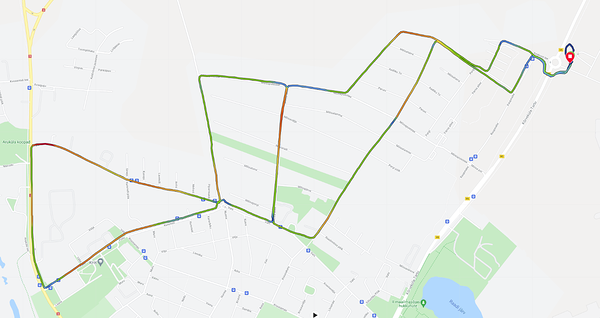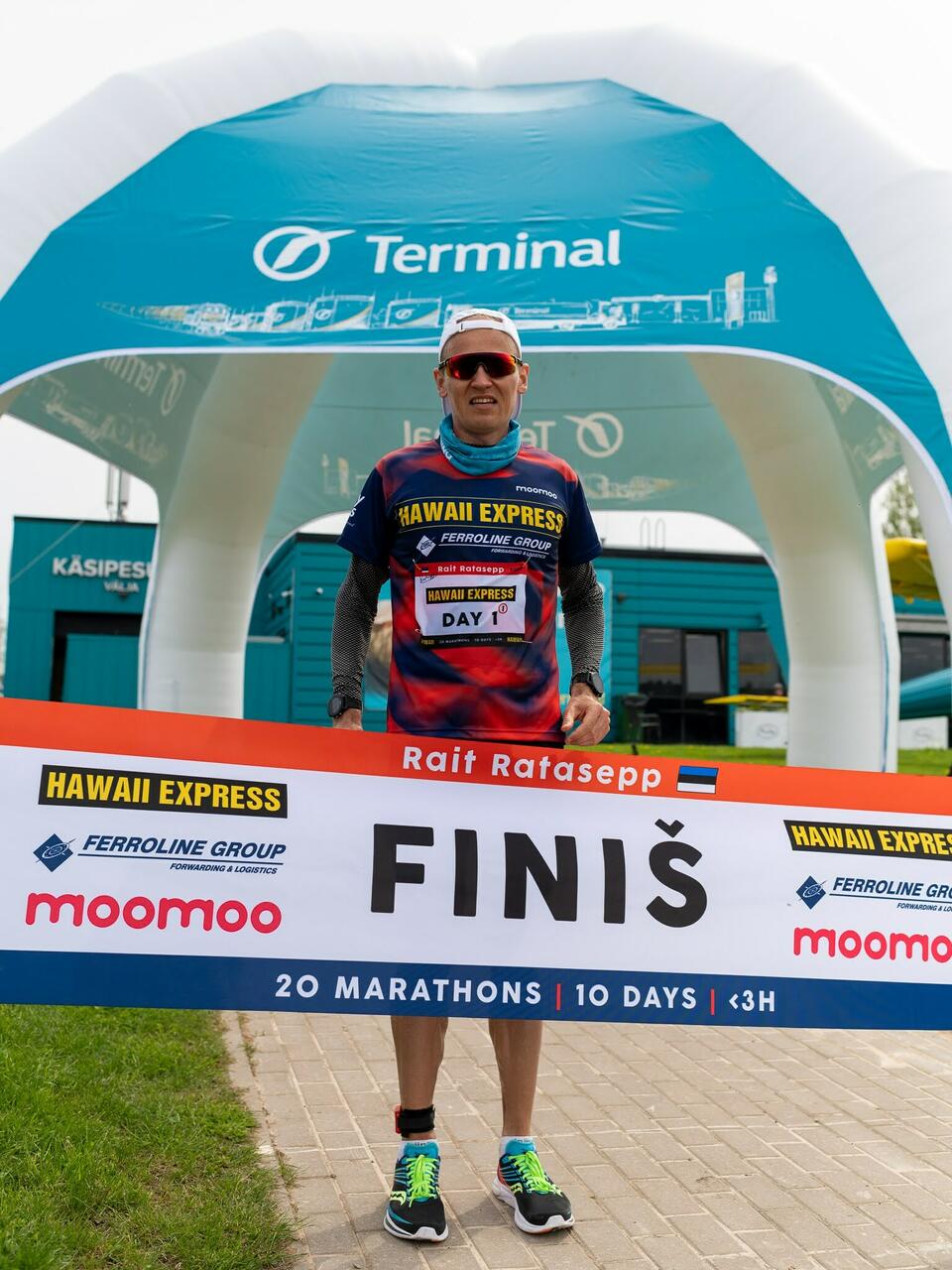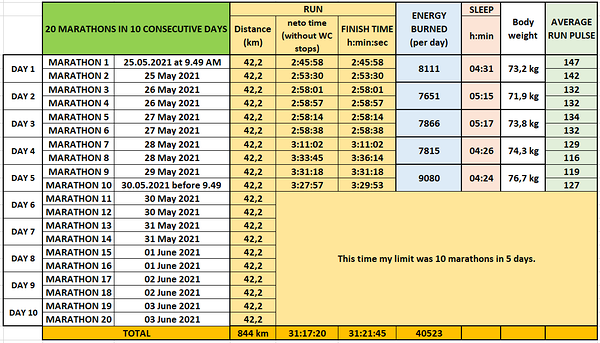20 marathons (42,195 km) in 10 consecutive days all under 3 hours
Date and place: May 25 - June 3, 2021, Estonia.
Goal: this time my challenge was to run 20 marathons in 10 consecutives days. In other words two marathons per day and 10 days in a row. One full marathon (42.2 km) in the morning, the other one in the afternoon.
Running course: I ran marathons on a 8.44 km loop near my home. I did five laps in total.
The result: this time, everything did not go as planned. I managed to run six marathons in less than three hours. It took me 3:11:02 to run the seventh marathon. By the fifth day, it was clear that in the second half of the challenge I would not run marathons again in less than 3 hours, so I decided to end the challenge with 10 marathons. Since this challenge was not my main goal this season, I didn't want to take any overload and injury risks just by passing the challenge. Running marathons without time pressure is nothing new to me. I have run marathons in a row many times in my previous challenges and races.
The result was affected by two factors. At first, the weather didn't favor me. The cold, windy and rainy weather of the second and third days made my challenge very difficult. At the same time, I do not consider weather conditions to be a determining factor in why my goal was not achieved, because I believe that difficult weather conditions would have been overcome if I had left the recovery time between marathons more or less equal. For example, I should have run the first marathon from 8 am to 11 am and the second from 7 pm to 10 pm. Wanting to protect my sleep time, I left a recovery time of 13 hours between marathons at night and 5 hours during the day. The mistake, however, was that during the few hours that remained between marathons during the day, I was unable to regain the energy spent with the first marathon of the day, not to mention the energy needed for the second marathon of the day. With the second marathon of the day, I was left with a big energy deficit, which, after accumulating for several days, became decisive.
I plan to return to this challenge in the future. At the moment, I see two possible approaches here. Make a generally similar preparation and leave the recovery time between marathons equal, or do it so that I run two marathons (each less than 3 hours) one after the other, leaving 18 hours to recover. However, the latter approach would require a completely different preparation. For example, if my current preporation included weekly long runs up to 64 km (average speed 4:09 min:sec/km), if I left an 18-hour recovery time, my longest uninterrupted training runs should reach up to 90 km with average speed 14, 3-14.5 km/h. Today, it is too early to say which path to take. This becomes clear during preparation.
Photo Jakob Meier: finish of the first marathon.
You can see the race statistics in the table below.
Video clip: an example of my running speed and pace from the last kilometer of Marathon No. 6.
Read more: 20 marathons in 10 days all under 3 hours - numbers and statistics.


